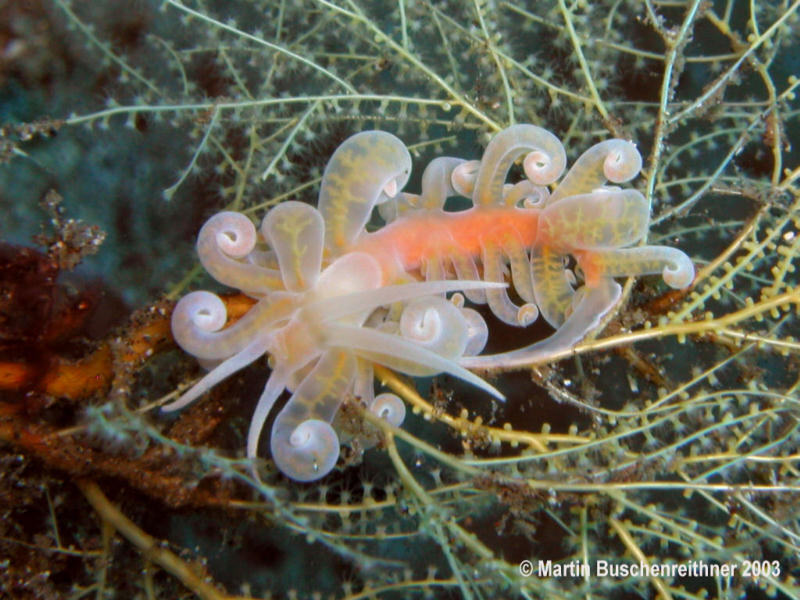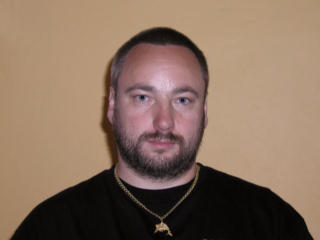 |
Phyllodesmium c.f. poindimiei
Photo courtesy of Martin BuschenreithnerLembeh Straits, Indonesia
Phyllodesmium c.f. poindimiei (Risbec, 1928)
This week Martin is sharing another one of his fantastic shots from Lembeh Straits, Batu Sandar, Indonesia. Although it sure looks like an undescribed species to me, I have called it Phyllodesmium c.f. poindimiei because the similarities (that's what the c.f. denotes) in body morphology to that species. Like P. poindimiei as seen on Bill Rudman's Sea Slug Forum, Martin's critter has curled cerata with branched digestive glands. His animal is not pink in color like most P. poindimiei , but has likely been feeding on the soft coral it is seen here crawling on, which is very different in color from the orange to pink telestacean soft coral Carijoa which P. poindimiei characteristically feeds on.
I had thought it might also be Phyllodesmium serratum (Baba, 1949), but the cerata of this latter species are not flattened and coiled. Martin's species really shows the functional morphology of the symbiotic relationship with single-celled plants called zooxanthellae which they keep alive in the ceratal cores. You can clearly see how the flattened cerata with the horizontally branched digestive glands provide optimum light angle and exposure of the symbiotic zooxanthellae to sunlight, in order to carry on photosynthesis. The aeolid benefits from the sugars and other byproducts produced during the process of photosynthesis. Phyllodesmium serratum does not have such a relationship, however, and is unusual among the members of the genus Phyllodesmium in that it feeds on a wide variety of octocorals, like Clavularia and Junceela , which do not carry zooxanthellae.
This specimen also shows regeneration of some of the animal's cerata which were autotomized or "dropped off" as a defensive strategy to deceive predators or unwanted advances. This defensive strategy is similar to sea hares and squid inking. Rapid regeneration of these organs is obviously important as they are critical to the critters ability to supplement its diet of coral polyps with the by-products of photosynthesis. When light levels are low this species is capable of rolling the cerata into a tight coil to protect them.
The deep opaque orange of the body is likely caused by ripe ovaries showing through the body wall.
Danville, Calif
Aug. 2003

|
Martin Buschenreithner lives in Mautem, Austria and has been diving since 1988 with a trip to the Red Sea. Martin and his wife were first fascinated with all the colorful fishes but gradually shifted their interests to the rare and unusal animals such as Frogfishes, Ghostpipe Fish, Seahoreses, Shrimps, Crabs, and Nudies of course. Martin considers the best area for such animals to be the Lembeh Strait in Sulawesi, Indonesia.
Martin has taken over 20,000 photographs in 10 years with MM MMX10 and MM II EX. Since October of 2001 he has almost exclusively been shooting digital first with the Olympus C-4040 Z and more recently with the Olympus C-5050Z.
Send Martin email at ma.busch@utanet.at |
Taxonomic information courtesy of:

David W. Behrens
Author:
Pacific Coast Nudibranchs
Send Dave mail at dave@seachallengers.com
|
